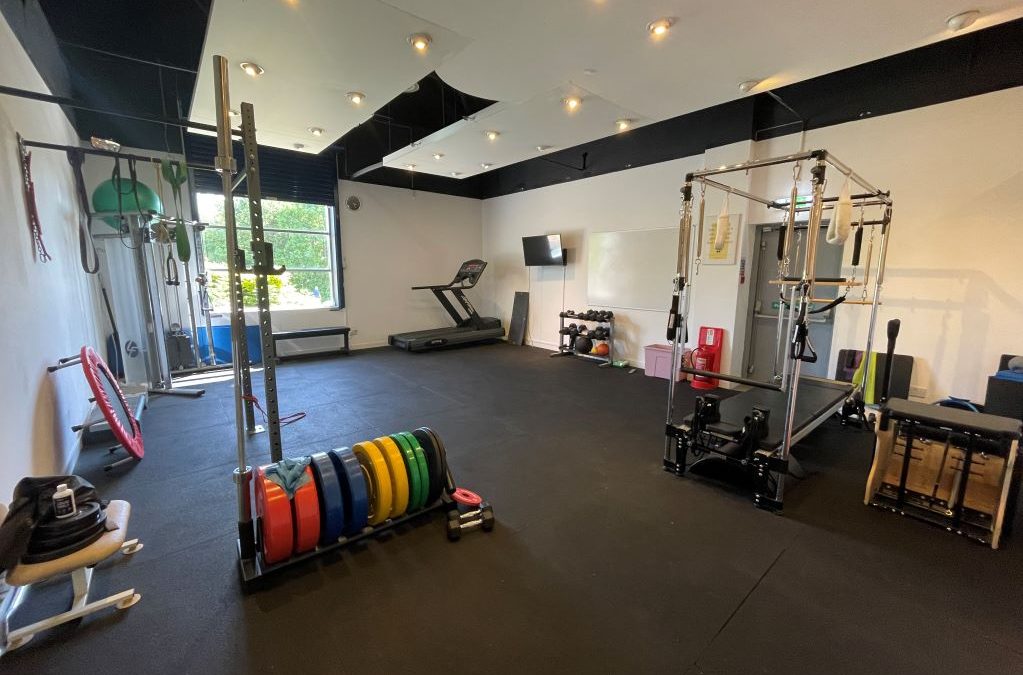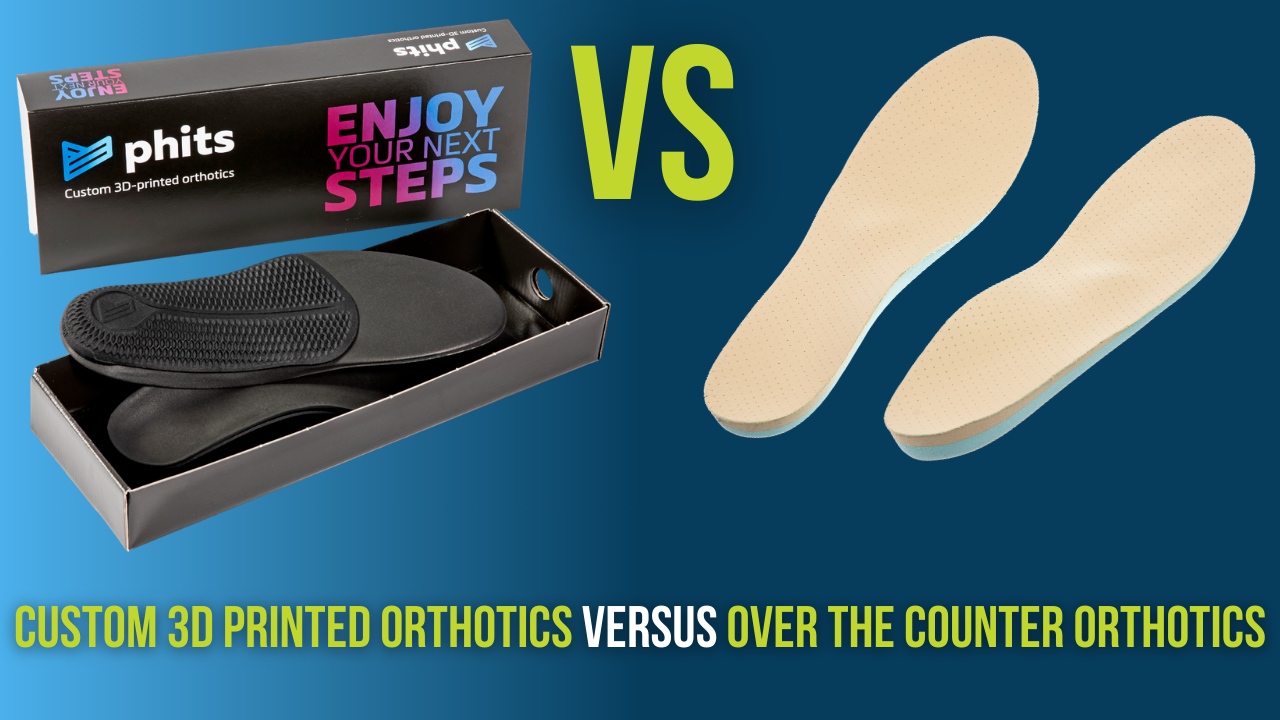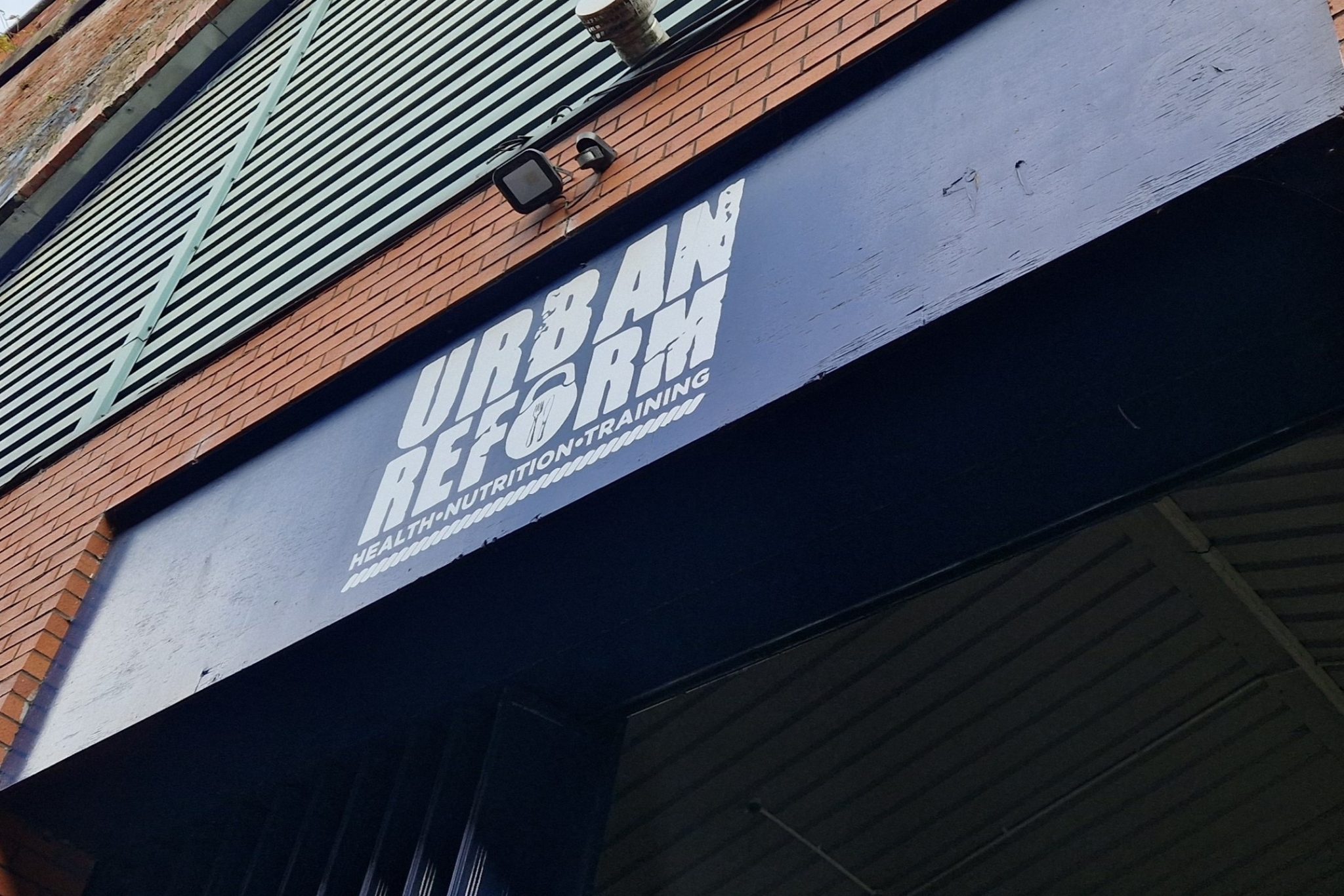Physiotherapy Techniques: Finding the Right Approach For You
Physiotherapy techniques are a diverse range of approaches that can help individuals find relief from various physical ailments. Whether you are recovering from an injury, managing a chronic condition, or seeking to improve your overall mobility and function, there are many different techniques that physiotherapists can utilise to address your specific needs.
1. EXERCISE REHABILITATION
Exercise prescription refers to the systematic and individualised plan of physical activity designed by healthcare professionals, such as physiotherapists or rehabilitation specialists, to address specific health or rehabilitation goals.
The importance of exercise rehab
1. Promotes Healing: Targeted exercises can enhance blood flow and promote healing by delivering nutrients to injured tissues.
2. Restores Function and Strength: Rehabilitation exercises address specific functional limitations caused by the injury.
3. Prevents Secondary Complications: Immobility or prolonged rest can lead to secondary issues such as muscle atrophy, joint stiffness, and decreased cardiovascular fitness. exercise helps prevent these complications and maintains overall health.
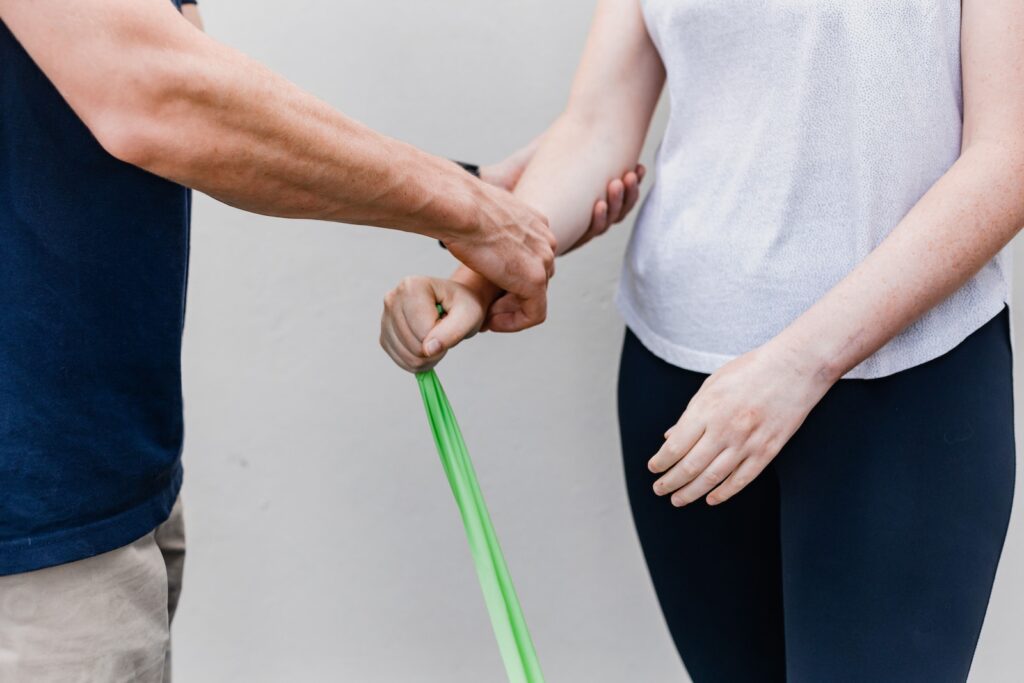
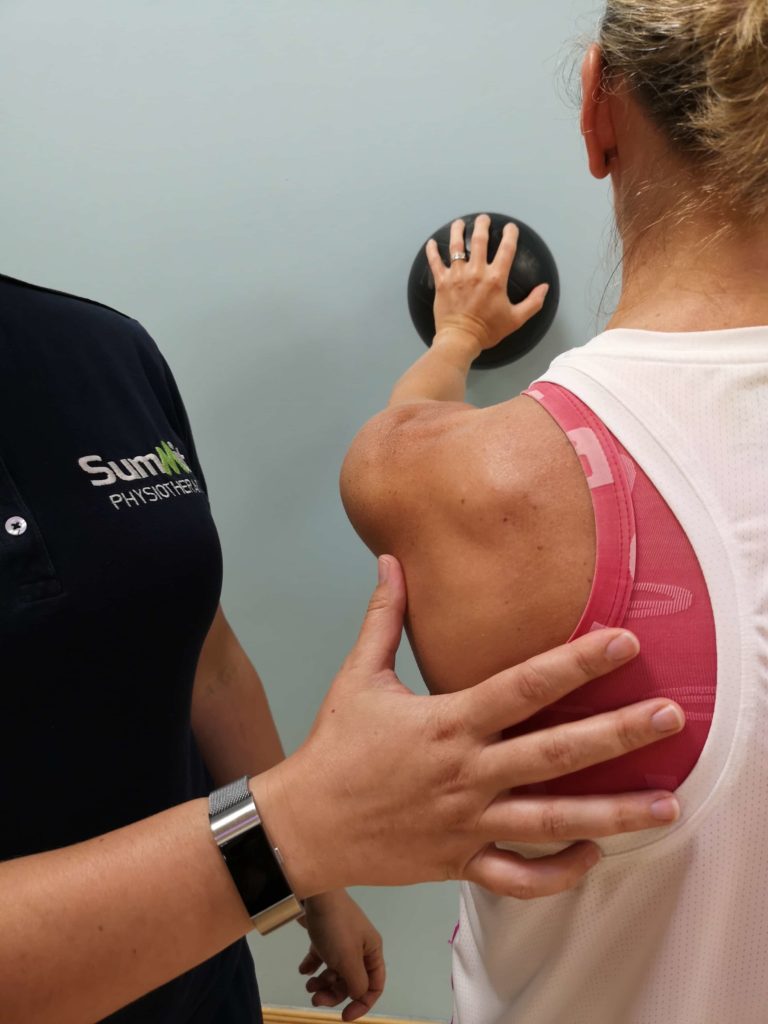
4. Improves Range of Motion and Flexibility: Targeted stretching and mobility exercises can help restore normal range of motion. Improved flexibility aids in preventing future injuries and enhances overall movement.
5. Enhances Neuromuscular Control: Exercises that focus on coordination and balance contribute to improved neuromuscular control. This is particularly important for preventing re-injury and improving overall stability.
6. Addresses Compensation Patterns: After an injury, individuals may develop compensation patterns to avoid pain. A personalised exercise plan will combat this problem.
7. Facilitates a Gradual Return to Activity: Exercise prescription ensures a structured and gradual reintroduction of activities, reducing the risk of re-injury. It helps individuals regain confidence in their ability to move and perform activities.
8. Individualisation: Each person’s injury and rehabilitation needs are unique. Exercise prescription allows for a tailored approach based on the individual’s specific condition, goals, and progress.
2. Sports massage
Sports massage is a specialised form of massage therapy that focuses on addressing the unique needs of athletes and individuals that need deep tissue therapy. This type of massage aims to enhance athletic performance, aid in recovery, and prevent or rehabilitate injuries.
Types of sports massage
- Pre-Event Massage: Applied before a competition or intense training session. Aims to prepare the muscles for activity by increasing blood flow, flexibility, and mental readiness. Typically, shorter in duration and uses invigorating strokes.
2. Post-Event Massage: Applied after a competition or workout. Focuses on reducing muscle soreness, promoting recovery, and addressing any immediate issues. Incorporates techniques to flush out metabolic waste products.
3. Maintenance Massage: Regular sessions between events or training to maintain optimal muscle condition. Targets specific muscle groups based on the individual’s activity and training regimen. Aims to prevent overuse injuries and maintain overall flexibility and function.
4. Rehabilitative Massage: Targeted towards resolving specific injuries or addressing chronic issues. Involves a more in-depth assessment of the injury and the application of techniques to promote healing and restore function. Often a collaborative effort between massage therapists and other healthcare professionals.
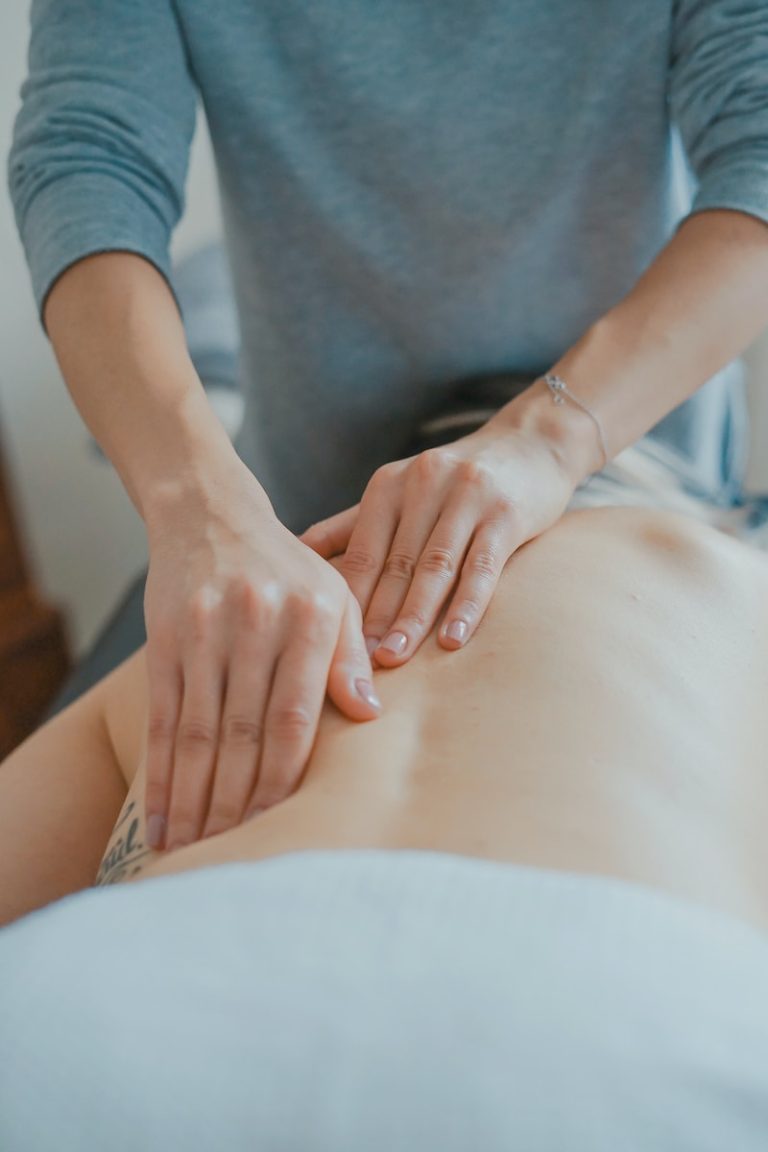
Benefits of Sports Massage for Injury Rehabilitation
Increased Blood Flow: Sports massage helps improve circulation, delivering oxygen and nutrients to the muscles, which is crucial for the healing process.
Reduced Muscle Tension: The application of various massage techniques helps release muscle tension, knots, and adhesions, promoting better flexibility and range of motion.
Enhanced Recovery: Massage can aid in the removal of metabolic waste products, reducing muscle soreness and promoting faster recovery after intense physical activity.
Improved Flexibility: Sports massage can contribute to improved muscle flexibility, which is essential for preventing injuries and maintaining optimal athletic performance.
Pain Reduction: By addressing muscle tightness and imbalances, sports massage can alleviate pain associated with injuries, strains, or overuse.
Enhanced Joint Mobility: Massage techniques that target soft tissues around joints can improve joint mobility and function.
3. shockwave therapy
Shockwave therapy, also known as extracorporeal shock wave therapy (ESWT), is a non-invasive medical treatment that uses high-energy shockwaves to stimulate healing, reduce pain, and promote tissue regeneration. It is often employed in the management and rehabilitation of certain musculoskeletal conditions and injuries.
how does it work?
Shockwave therapy devices generate acoustic waves or shockwaves, either focused or radial, depending on the application. The shockwaves are directed to the target area, typically an injured or problematic soft tissue or bone. The shockwaves induce several biological responses, including increased blood flow, cellular metabolism, and the release of growth factors. These effects stimulate the body’s natural healing processes.
Shockwave therapy is commonly used for conditions like Achilles tendinopathy, patellar tendinopathy, and rotator cuff tendinopathy. It can help stimulate the healing of damaged tendons, reduce pain, and improve function.
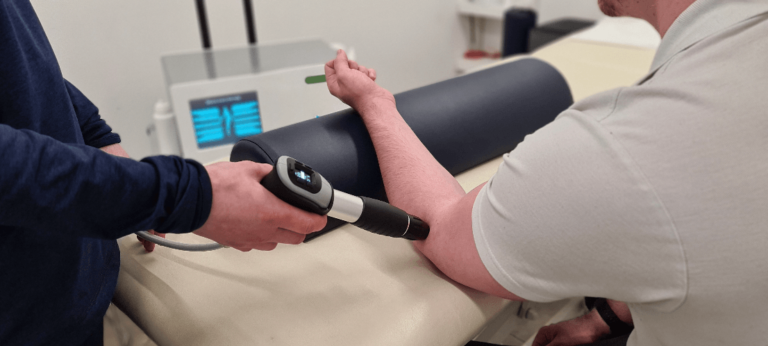
Benefits in injury rehabilitation:
Pain Reduction: Shockwave therapy can help reduce pain associated with various musculoskeletal conditions, promoting a more comfortable rehabilitation process.
Improved Blood Flow: The treatment enhances blood circulation to the targeted area, facilitating the delivery of nutrients and oxygen essential for tissue healing.
Collagen Production: Shockwave therapy stimulates the production of collagen, a crucial component of connective tissues, aiding in tissue repair and regeneration.
Non-Invasive: Unlike surgical interventions, shockwave therapy is non-invasive, reducing the risks and complications associated with more invasive procedures.
Accelerated Healing: By promoting cellular activity and tissue regeneration, shockwave therapy may expedite the healing process.
4. Hyperbaric Oxygen Therapy:
Hyperbaric Oxygen Therapy (HBOT) is a treatment that involves breathing pure oxygen in a pressurised room or chamber. The increased atmospheric pressure allows the body to absorb a higher concentration of oxygen, leading to various therapeutic effects.
How does it work?
Individuals enter a hyperbaric chamber where the atmospheric pressure is higher than normal. While in the chamber, individuals breathe 100% oxygen, as opposed to the approximate 21% oxygen in normal air. The elevated pressure allows the lungs to take in a higher amount of oxygen, and this oxygen dissolves into the bloodstream at an increased rate. The oxygen-rich blood is transported to tissues throughout the body, promoting various physiological effects.
At Summit, we have a soft shell reclined chamber, meaning you can relax, read a book, listen to music or catch up on your favourite shows whilst enjoying the treatment.
Sessions are 60 minutes long and optimum results are achieved after a course of sessions; specific to your individual needs and circumstances.
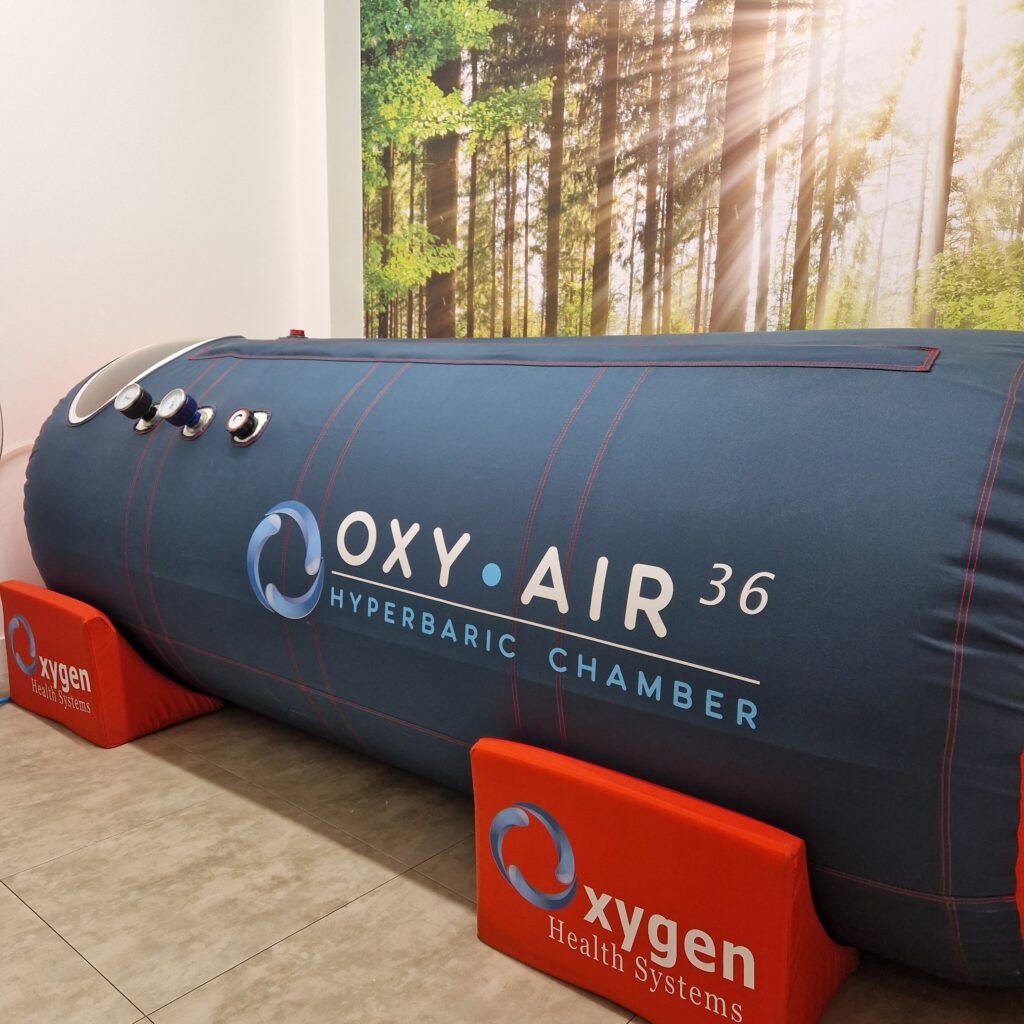
Potential Applications in Injury Rehabilitation:
Enhanced Wound Healing: Hyperbaric oxygen therapy can improve wound healing in conditions such as diabetic ulcers, non-healing wounds, and surgical incisions. Increased oxygen levels promote the formation of new blood vessels and collagen production.
Reduced Inflammation: The therapy has anti-inflammatory effects, potentially reducing inflammation associated with injuries and promoting a more favourable environment for healing.
Improved Recovery from Soft Tissue Injuries: Hyperbaric oxygen therapy may benefit individuals recovering from soft tissue injuries, such as strains, sprains, or ligamentous injuries. Enhanced oxygen delivery to tissues supports repair processes.
Bone Fracture Healing: Some studies suggest that hyperbaric oxygen therapy may contribute to the healing of certain types of bone fractures by promoting osteogenesis (bone formation).
5. REformer Pilates
Reformer Pilates is a form of exercise that utilises a specialised piece of equipment called a Pilates reformer. Pilates, in general, is a system of physical fitness that focuses on improving flexibility, strength, and body awareness. The reformer is a versatile apparatus with a sliding carriage, springs, and various attachments, providing resistance and support for a wide range of exercises.
Pilates by Ruth has a Pilates Reformer within our Chorley clinic. Here she offers one to one individualised Modern Pilates.
Characteristics of Reformer Pilates:
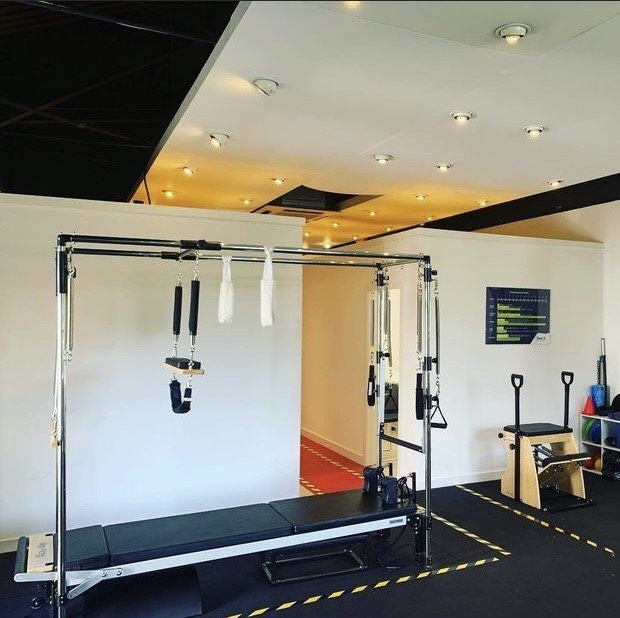
Pilates Reformer: The reformer consists of a frame with a sliding carriage. Springs of varying resistance are attached to the carriage, allowing for adjustable resistance during exercises. Straps, bars, and other accessories are incorporated to target different muscle groups.
Controlled Movements: Reformer Pilates emphasises controlled and precise movements with a focus on breath awareness. Movements are often slow and deliberate, promoting proper alignment and engagement of muscles.
Core Engagement: Core strength and stability are fundamental in Reformer Pilates. Many exercises involve activating the deep core muscles to support and control movement.
Full-Body Engagement: Reformer Pilates targets the entire body, incorporating exercises for the arms, legs, back, and shoulders. It aims to create balanced strength and flexibility throughout the body.
Why Reformer Pilates can be key in Injury Rehabilitation:
Low-Impact Exercise: Reformer Pilates is generally low-impact, making it suitable for individuals with joint issues or those recovering from injuries. It provides a gentle yet effective way to improve mobility without placing excessive stress on joints.
Improved Core Strength: Core strength is crucial for overall stability and body mechanics. Reformer Pilates places a strong emphasis on core engagement, helping individuals strengthen and stabilise the muscles around the spine.
Muscle Lengthening and Flexibility: Reformer Pilates exercises often involve controlled stretching and lengthening of muscles. Improved flexibility is essential for injury prevention and rehabilitation.
Individualised Resistance: The reformer’s adjustable springs allow for customised resistance based on an individual’s strength and fitness level. This adaptability is beneficial for tailoring exercises to specific rehabilitation needs.
Increased Circulation: The controlled breathing and movement in Reformer Pilates can enhance circulation, aiding in the delivery of oxygen and nutrients to tissues, which can be beneficial for the healing process.
In Summary...
In conclusion, physiotherapy techniques are diverse and can be highly effective in helping individuals find relief from physical ailments and improve their overall function.
By working closely with a skilled practitioner, you can develop a personalised treatment plan that addresses your unique needs and helps you achieve your goals. Remember to actively participate in your treatment and follow the recommendations provided to optimise your results!
If you wish to seek further help or speak to a practitioner about any of the above physiotherapy techniques, call us on 0800 731 2738 or book online here.
You can also view all the services we provide within our clinics on our website, as well as checking out our other blogs and content.
For more free tips and information, make sure to follow our Facebook and Instagram pages. We also post client stories, so you can see how we’ve helped people get back to doing the things they enjoy!
